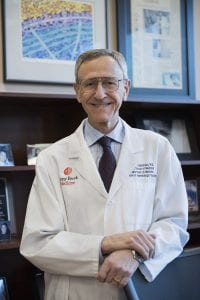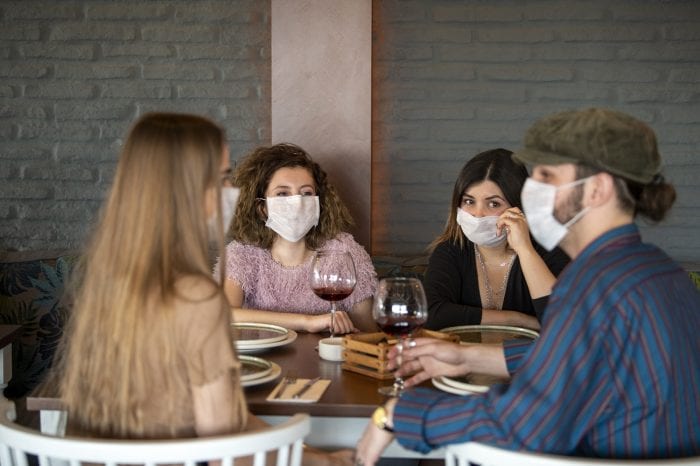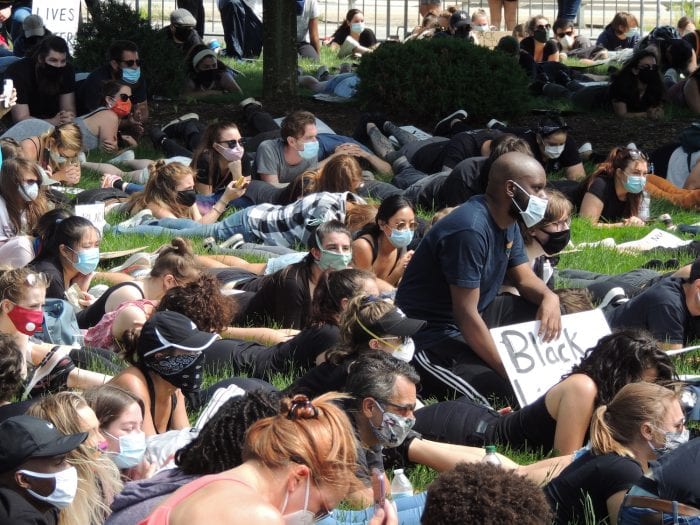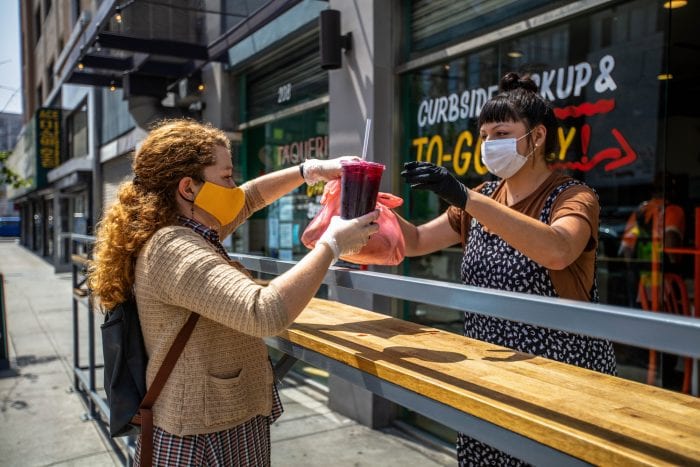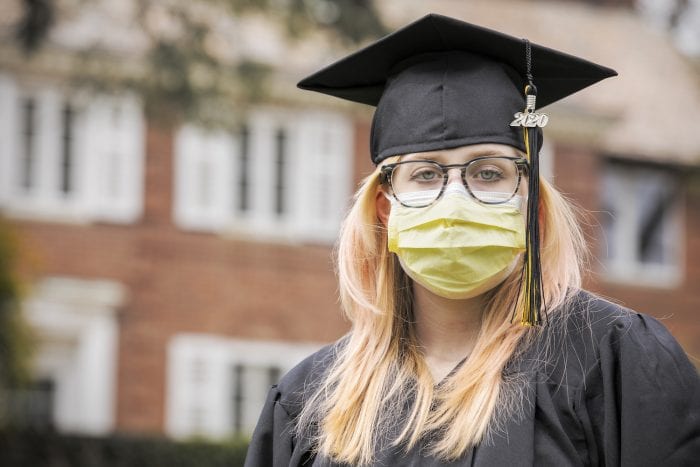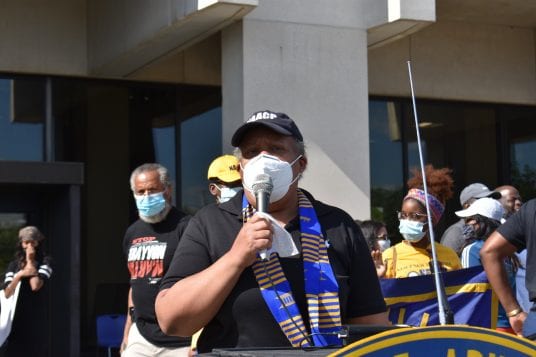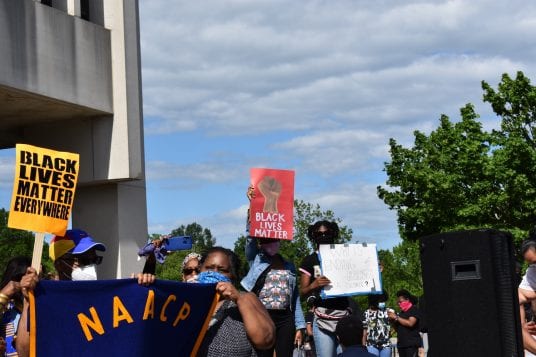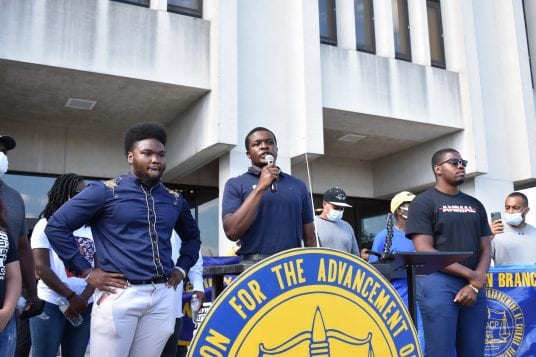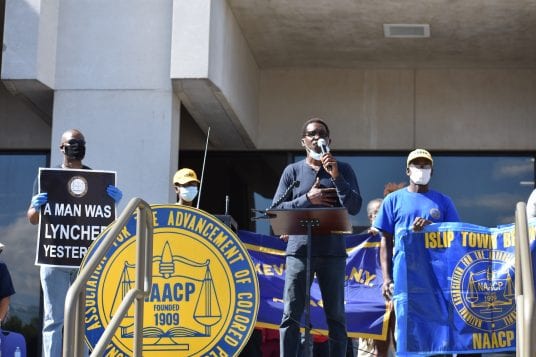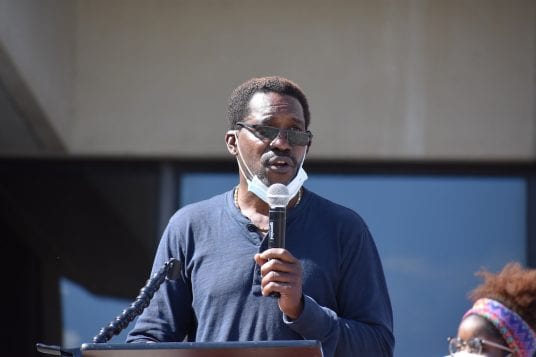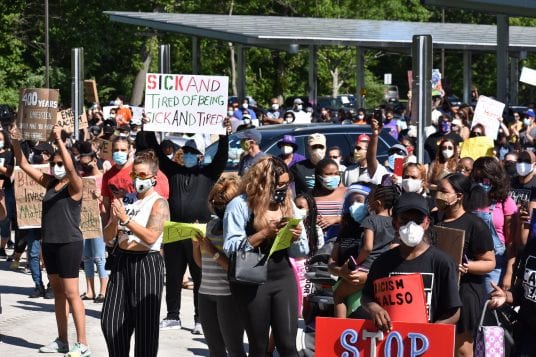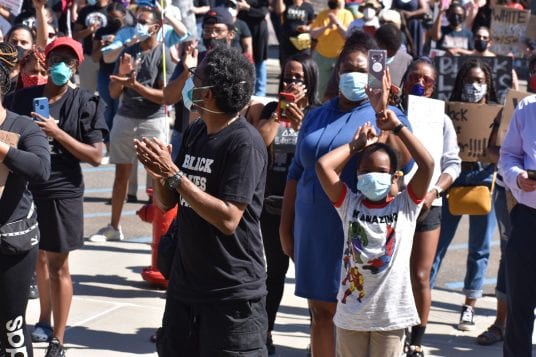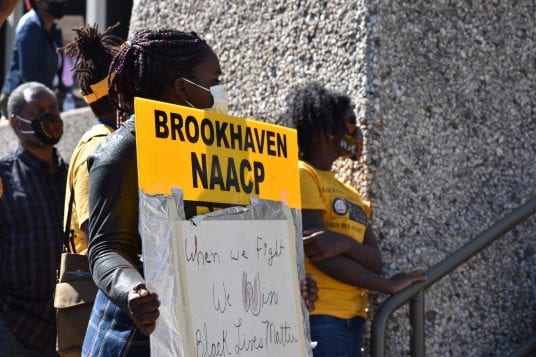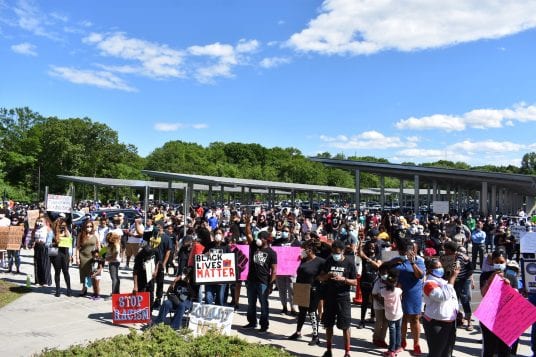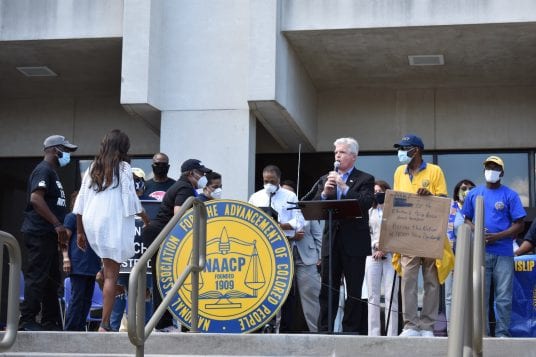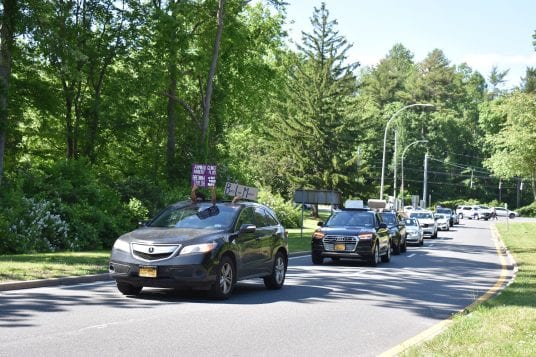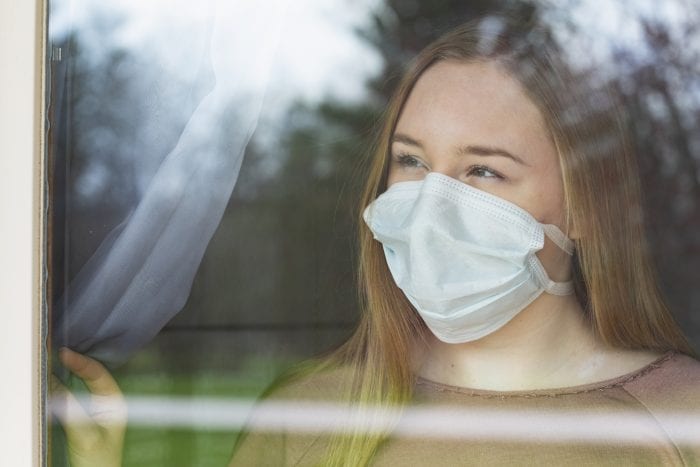On June 1, the League of Women Voters of the Hamptons and North Fork held a debate between the four candidates vying for the Democratic nomination and who will then face off against incumbent Lee Zeldin (R-NY1) for the New York’s 1st Congressional District seat. The nominees in the upcoming primary election June 23 are Suffolk County Legislator Bridget Fleming (D-Sag Harbor), last year’s front-runner Perry Gershon, former educator Nancy Goroff and Gregory Fisher, who has run for multiple local offices over the years.
Though the debate went on for more than an hour and a half, it did not touch on points such as the current protests against racism and police violence currently rocking the nation.
Here’s what they had to say on a number of key issues and challenges facing the district.
1.On what issues do you think there is a reasonable possibility of enacting legislation to benefit the country?
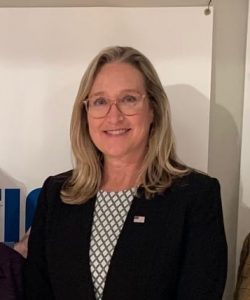
Fleming: I’m known as someone who has reached across the aisle and looks at problems and challenges with an eye toward hearing from all stakeholders. Then taking on the tough decisions to move forward. I have a proven record on that.
There are a number of issues that face our congressional district. One, for instance, is immigration. Many people feel that the current immigration system needs comprehensive reform. Individuals are so enamored with special interests.
Another issue is the epidemic of gun violence. There is a consensus in the country on commonsense background checks, on a ban on assault weapons, and a ban on high-capacity magazines. There are many issues upon which the country agrees but because of the influence of special interests and someone like Lee Zeldin, who has a perfect record from the NRA, caters to those special interests. We can get beyond that.
Gershon: The goal when I’m your congressman is to enact policy that we can do on a bipartisan basis whenever possible. There is a crying need for certain policies as we go forward and try to climb out of the coronavirus-based recession. That’s building jobs. How do you do that? With infrastructure and investing in our economy. There was a glaring need for infrastructure even before coronavirus, and it’s doubled or tripled now.
We have the opportunity for green jobs, green energy in a new economy. We need Democrats and Republicans cooperating with each other. That obviously starts with getting [President] Donald Trump (R) out of the White House. With a uniter in the White House we can pass policies and take it beyond infrastructure, we can go to health care, the other real priority for America. We can build on the Affordable Care Act. We can make sure Americans understand that health care is a right not a privilege.
Goroff: If I’m elected my top priority is to make sure we are taking meaningful action on climate change, which is the largest threat we face to our way of life, even today. I can do that by acting as a resource for members of Congress from both sides of the aisle — making sure they have access to the best information available, making sure all their questions are answered and holding their feet to the fire to ensure we are taking action. We will make sure we are setting ambitious targets as we strive for a carbon zero economy.
We invest in deploying existing technologies, in reusable energy, in clean vehicles, and in clean buildings.
Fisher: One of the important issues is that voters don’t feel like they are being listened to. They are looking at a lack of access to their representatives. We are crippled economically, people are out of a job and can’t pay their bills. They want to know how you are going to get things done and get us out of trouble.
I subscribed to a philosophy called a decentralized autonomous organization, where citizens can input every detail, on what they want to influence. I have an economic plan that will eliminate the scarcity caused by this long-term economic shutdown.
2. As a congressperson what specific proposals would you support to improve our immigration system?
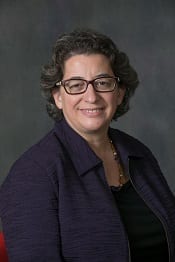
Goroff: We need to take action toward making comprehensive immigration reform. We must prepare a pathway to citizenship for our Dreamers and we must make sure we are allowing families to be reunited. We can’t be separating children from their families at the border and we should be considering more effective/humane ways to help people coming in who want to claim asylum.
The fact that people have to wait for months or years, and now we are imprisoning them — is unnecessary and unconscionable. We should be looking at why we have such a stream of refugees coming to our border. There are programs that were started in Central America by the Obama administration to help refugees on the ground, so they don’t have to leave. We need to make sure we are reinstating these programs that can keep refugees from thinking the only opportunity is to walk 1,000 miles across Mexico. Our policy must be humane and must live up to our American values.
Fisher: Most citizens want several points addressed. They want registration, they don’t want a secret population, they want taxation, they want to make sure they are paying their share. The other one is assimilation and education so that those people are ready for our society.
There are people out there that are starving for the opportunity to be a part of this American dream.
Fleming: The immigration system in the United States is deeply broken and needs comprehensive immigration reform. It needs to be the top priority of anyone’s agenda who is looking to take a job on Capitol Hill.
We need to fix our broken visa system. Luckily in Suffolk County, we have allies in the farm community who have been deeply hurt by the system and can’t find enough workers to harvest their crops. That is an alliance we can lean on in Suffolk County to move that process forward and make reforms.
We need to end separations of families at the border. It is inhumane and unacceptable. We need a clean DACA [Deferred Action for Childhood Arrivals] bill, we need to restore TPS [Temporary Protected Status]. We need to ensure that the border is secure, but secure because we have undertaken a system of immigration that is fair and humane.
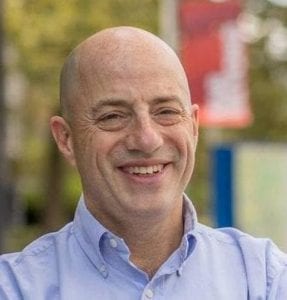
Gershon: It’s no secret that immigration was a challenge in this country even before the election of Donald Trump. We have been trying to solve our immigration issue for many years and under many different presidents.
Trump has made a bad situation and made it worse. We’ve got to take care of the Dreamers, people who are in this country through no fault of their own, who did not commit a crime, and have no nation they call home except America. We need to give them a path to citizenship, we need to take care of TPS recipients. We need to have defensible borders, we need to have a system where people do not just flock into America. We need to be able to secure our borders and be able to maintain them while we take care of the people here.
3.How can we bring affordable housing, job creation to LI, especially for millennials?:
Goroff: Now with COVID-19, millennials are facing another challenge in getting their careers started. As a lifelong educator, I believe in making education available to people and to make it affordable. That means making sure we have sufficient Pell grants for our students. So people and families can afford excellent degrees and they can get good jobs.
We also need to make sure all jobs are paying a true livable wage and that means investing in new jobs here, like clean energy and increasing the minimum wage. We also need to address the health care issue because it is a burden on businesses.
Fisher:We have created a generation of homeless millennials. Why? Because they can’t leave their parents’ homes, they can’t afford to buy a house or pay the rent for an apartment. They are living late in life at their parent’s houses. My plan would include a revamp of the tax system, so we have money to invest [in the economy]. Education should be a right, we need to build America. We need to fundamentally make a new commitment to young people and realize that we have betrayed them.

Fleming: This is one of the critical challenges here in Suffolk County and in NY1. It is something at the county legislature we have attacked with real intention and real success. For instance, look at the Village of Patchogue and the surrounding areas.
The developments of these vibrant downtowns are encouraging young people to stay on Long Island and make a life here.
I’ve been fighting for affordable housing since my time on the [Southampton] town board.
Gershon: People want to stay here and not to be forced to move away because of better jobs. The way we fix that is get better paying jobs here on Long Island so that young people can move here. Also, we need to improve their educational prospects by not having them come out of school massively burdened by student debt. We need to do things like reducing the cost of student debt. The federal government should not be making a profit off it by lending to our students so they can afford to go to college. The government should be facilitating college education.
We can give people the opportunity to pay off some of their student debt in exchange for national service. Let them be teachers, let them do things that will improve our own society.
On affordable housing, we need to bring money into Long Island. We need to fund housing for the middle class, we need to find a way that doesn’t force people away. The government can do that, it can be a federal policy. We need fair development as well.



